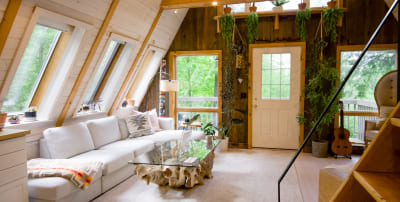
Impact of Dollar Rates on Real
Estate Prices in Pakistan
The rise and fall of the dollar has a bigger impact on Pakistan’s property
market than most people realize. Every time the rupee weakens against the US
dollar, it doesn’t just affect imports or trade—it directly changes the way
real estate is built, bought, and sold. Since so much of Pakistan’s economy is
linked to dollar-based pricing, even small fluctuations leave their mark on
property development, housing affordability, and investment trends.
When the dollar goes up, construction costs increase because imported
materials and machinery suddenly become more expensive. This pushes property
prices higher and makes home ownership tougher for local buyers. At the same
time, overseas Pakistanis, who earn in stronger currencies, often see this as
an opportunity—since property in Pakistan looks cheaper for them.
But it’s not just about costs. The exchange rate also affects how people think. Local investors usually turn to
property as a safe place to park money when the rupee is losing value. On the
other hand, when the exchange rate is stable, confidence returns and long-term
planning becomes easier for developers. In short, the dollar rate is both an economic driver and
a psychological
trigger—making it one of the most powerful forces shaping
Pakistan’s property market.
One of the first places where a rising dollar shows its effect is in the
construction industry. That’s because many building materials and equipment are
either imported or priced according to international benchmarks.
Imported Materials: Steel, aluminum, glass, tiles, elevators, and
even construction machinery often come from abroad. When the dollar rises, the
cost of importing these items goes up, and so does the overall budget of
construction projects.
Local Materials: Even locally made materials like cement, bricks, and
paints aren’t spared. Their production relies on fuel, energy, and machinery
that are linked to dollar prices. So, when the dollar rises, local material
costs also climb.
Effect on Projects: Large housing schemes and real estate
developments are planned on fixed budgets. But when the dollar shoots up, costs
cross initial estimates. Developers are then forced to either delay projects,
compromise on quality, or pass on the added burden to buyers.
Effect on Buyers In the end, it’s the buyer who feels the pressure. Houses, apartments, and plots become more expensive, and the dream of owning a home moves further out of reach for many families.
A stronger dollar → higher material costs → higher construction expenses →
higher property prices.
The rise and fall of the dollar doesn’t just hit imports — it directly
changes the way Pakistan’s property market behaves. But the effect doesn’t come
all at once. First, there’s a short-term shock, and later, a long-term rise in prices.
Whenever the dollar shoots up, the market goes into a kind of pause.
Buyers hold back.
People get nervous, unsure if prices will go up more or settle down, so they
stop buying for a while.
Sellers wait.
Property owners and developers, now facing higher costs, either increase their
asking prices or decide not to sell at all.
Deals slow down.
With both sides cautious, transactions drop.
This short-term shock is more about uncertainty than actual property
value. The fear of instability makes the market freeze temporarily.
Long-Term Rise
Once the panic phase ends, the long-term trend becomes clear: prices climb
higher.
Construction costs
go up and never return to old levels, so properties become
permanently more expensive.
Investors shift
money into real estate because property is seen as a safe hedge
against inflation and currency depreciation.
Demand stays strong
due to population growth and limited land in big cities.
The result is simple: even if buying slows for a while, prices eventually
rise and keep moving upward.
Short term: Dollar rise = hesitation, confusion,
slower buying and selling.
Long term: Higher costs and steady demand =
prices keep going up.
3. Investor Behavior and the Dollar Link
In Pakistan, the movement of the dollar doesn’t just affect imports or
construction costs it directly shapes how investors think and act in the
property market. The PKR–USD exchange rate often decides whether people move
money quickly into real estate or take a more cautious, diversified approach.
A stronger dollar almost always creates urgency among investors.
Protection against inflation: As the rupee
weakens, everyday costs go up. Real estate becomes a natural hedge because
property prices usually climb in step with inflation.
Safe store of value: Just like gold,
land and property are considered stable assets that can preserve wealth when
cash is losing purchasing power.
Fear of missing out: Investors often
speed up buying decisions, worried that waiting will make property prices jump
even higher.
When the Dollar is Stable or Falls
A steady dollar changes the mood. The pressure to act quickly eases and
investors become more selective.
Looking at alternatives: With less fear
of currency erosion, some investors divert funds into stocks, businesses, or
other opportunities instead of parking everything in property.
Confidence in long-term planning: Developers and
buyers feel more secure committing to large housing schemes or commercial
projects when exchange rates are stable, since costs and returns can be predicted
more reliably.
Mindset Matters
At the heart of it, the dollar’s movement shapes investor psychology:
Dollar rises → fear of inflation and rupee
weakness → rush into property.
Dollar stabilizes → confidence returns →
investors diversify and plan long-term.
In short, the exchange rate isn’t
just an economic number — it’s a signal that drives investor choices in
Pakistan’s real estate market.
4. Rental Yields vs Capital Gains
When people put money into real estate, they’re usually chasing one of two
things:
Rental income — steady cash coming in every
month.
Capital gains — long-term profit when property
prices go up.
Which of these makes more sense depends a lot on what’s happening with the dollar
rate.
When the Dollar Goes Up
A rising dollar makes construction more expensive, which pushes property
prices higher. Suddenly, buying a house becomes out of reach for many middle-class
families.
More people end up renting instead of buying.
Apartments and smaller homes get the most demand.
Landlords can charge more rent, so rental income improves.
In this situation, investors often prefer the security of monthly rent
rather than waiting years for prices to rise.
When the Rupee is Stable
If the dollar stops climbing and the rupee holds steady, the market breathes
a little.
Builders can finish projects without surprise cost hikes.
More buyers feel confident about owning property instead of renting.
Property values rise gradually, rewarding those holding on for the long
haul.
Here, the focus shifts back to capital gains — buying land, bigger
homes, or commercial property to sell later at a higher price.
Even when the
rupee keeps losing value, property prices in Pakistan usually trend upward over
time. That’s because once construction costs go up, they rarely come down. So
the “base price” of property keeps resetting higher.
The best investors don’t stick to just one approach. They adjust with the
dollar:
Dollar rising → focus on rentals (apartments,
small houses, shops).
Dollar stable → focus on long-term appreciation
(plots, luxury projects, commercial property).
The Choice Every Investor Faces
Rental income = safe and steady cash today.
Capital gains = bigger wealth tomorrow, but
requires patience.
At the end of the day, the dollar’s movement decides which path looks safer
— rent-focused income when the dollar climbs, or wealth-building capital gains
when the market is stable. Smart investors usually balance both: earning rent
now while holding assets that can appreciate later.
5. Sector Wise-Analysis
The movement of the PKR–USD exchange rate doesn’t hit every part of
Pakistan’s property market in the same way. Some sectors feel the pressure
immediately, while others react more slowly. Here’s how different segments are
affected:
Residential Real Estate
This is the most sensitive part of the market because it directly affects
families and middle-class buyers.
When the dollar rises, construction materials like steel, cement, tiles, and
fixtures become more expensive, which pushes up housing and apartment prices.
For many middle-class families, buying a home becomes unaffordable, so they
shift toward renting instead.
Developers usually respond by cutting project sizes, launching smaller
apartments, or delaying construction to control costs.
Overseas Pakistanis, however, often see this as an opportunity. Since they
earn in stronger currencies like USD, GBP, or AED, property becomes cheaper for
them when the rupee weakens. Their investment helps keep this sector alive even
when local demand slows down.
Commercial Real Estate
This includes shops, malls, plazas, and office spaces.
When the dollar rises, businesses that rely on imports face higher costs and
lower sales. Many delay expansion or cut back on office space.
Inflation reduces consumer spending, which directly impacts mall and plaza
occupancy.
Still, commercial property often acts as a hedge for investors because rents
usually rise with inflation. Landlords can pass on higher costs to tenants,
keeping rental yields stable.
Industrial Real Estate
This covers factories, warehouses, and industrial plots.
A stronger dollar makes importing machinery, equipment, and raw materials
more costly, which increases setup and expansion expenses for manufacturers.
Rising energy prices (often dollar-linked) add more pressure.
On the positive side, export-oriented industries like textiles, IT services,
and logistics benefit from a weaker rupee. Their products and services become
more competitive abroad, keeping demand for export-related industrial real
estate healthy.
Agricultural Land
Often overlooked, farmland behaves differently from urban property.
Farming mostly relies on local inputs, so it’s less affected by imports.
However, costs still rise due to fuel and fertilizer being linked to global
markets.
Despite this, agricultural land usually holds its value because food demand
is constant and often grows during inflation.
Many investors even shift towards agricultural land in uncertain times,
seeing it as a safe and stable investment. Rising food prices make it more
profitable too.
In short, while every real estate sector feels the impact of a rising dollar, the effects are not the same. For families, it makes buying harder. For businesses, it increases costs. For investors, it creates both risks and opportunities depending on where they choose to put their money.
6. Dollar Rate vs Real Estate – Historical Examples
The link between the dollar rate and Pakistan’s property market is not just
theory — it’s something we’ve seen play out again and again in the past. Every
big shift in the rupee–dollar exchange rates has left a visible mark on real
estate prices, investor activity, and even the kind of projects developers
launch.
Early 2000s (2001–2007): A Period of Stability
During these years, the dollar stayed fairly stable at around Rs. 58–62. That
stability gave both developers and buyers the confidence to invest. Mega
housing schemes like DHA and Bahria Town grew
rapidly, property prices rose at a steady pace, and remittances further fueled
the boom.
Lesson:
When the rupee is stable, costs stay predictable and investors feel secure.
2008–2013: Crisis and Weakening Rupee
After the global financial crisis, the rupee slid from Rs. 62 to Rs. 105.
Construction costs jumped, local investors pulled back, and inflation made
affordability a major issue. But for overseas Pakistanis, this was an
opportunity — property suddenly became much cheaper in dollar terms, and their
investments kept the market moving.
Lesson: A weaker rupee reduces local
buying power but attracts overseas buyers.
2018–2020: Sharp Devaluation under IMF Program
The dollar climbed from Rs. 110 to over Rs. 165. Building materials like steel
and cement shot up in price, many developers delayed or scaled down projects,
and fewer locals could afford to buy. As a result, demand for rentals surged, while overseas investors once again
played a key role in keeping major markets alive.
Lesson:
Rapid rupee depreciation slows projects, boosts rental demand, and shifts the
balance towards overseas buyers.
2021–2023: Record-High Dollar and Economic Uncertainty
The dollar skyrocketed from Rs. 165 to above Rs. 280 (even crossing 300 at
times). Construction
costs hit record highs, the middle class was priced out of buying, and many
shifted to renting or choosing smaller apartments. Yet, luxury projects and
developments backed by overseas buyers performed strongly since people earning
in USD were less affected.
Lesson:
Extreme rupee weakness sidelines local buyers but strengthens the role of
overseas investment in premium projects.
Stable Rupee → Strong local demand and steady
property growth.
Moderate Decline → Local affordability weakens,
but overseas inflows rise.
Sharp Devaluation → Project delays, a rental
boom, and reliance on overseas investors.
In short, the stronger the rupee, the more balanced and inclusive the real
estate market becomes. The weaker it gets, the more dependent Pakistan’s
property sector becomes on overseas Pakistanis to keep it alive.
The dollar’s movement doesn’t just push up construction costs or influence
investor choices it quietly reshapes the entire property market in many
indirect ways.
1. Housing Loans and Mortgages
When the dollar rises, inflation follows, and the State Bank usually raises
interest rates. This makes mortgages more expensive, reducing the number of
people who can afford to borrow for a house. As a result, many families delay
home ownership and the buying market slows down.
2. Government Support Programs
A weaker rupee increases Pakistan’s import bill and debt repayments, leaving
the government with less fiscal space. In such times, housing schemes,
subsidies, and low-cost housing initiatives often get delayed or scaled back.
3. Rise of the Rental Market
As home ownership becomes unaffordable, more families turn to renting. This
drives up demand — and in many cases, rental prices — which benefits landlords.
For investors, rental yields often stay steady or even rise during economic
uncertainty.
4. Overseas Pakistani Investments
For overseas Pakistanis, a weaker rupee is often good news. Every dollar
they send converts into more rupees, making property back home appear cheaper.
This inflow of remittances often keeps the market alive when local demand
weakens.
5. Real Estate as a Wealth Shelter
Wealthier investors see property as a safe place to park money during
uncertain times. Instead of watching their cash lose value, they move funds
into land and buildings, treating it as a hedge against devaluation and
inflation.
6. Confidence and Sentiment
Perhaps the most overlooked factor is psychology. A stable dollar builds
confidence, encouraging long-term planning and investment. A rising dollar, on
the other hand, spreads anxiety — pushing people to act quickly or hold back
altogether. The dollar doesn’t just shape property prices — it influences who buys, who rents, how
policies evolve, and where money flows. Its indirect effects are often what
truly define the direction of Pakistan’s real estate market.
Investor behavior also changes with the exchange rate. Local investors who
have cash move into property to protect their money, while overseas Pakistanis
find it cheaper in dollar terms and invest more aggressively. This balance
between local and foreign buyers shifts every time the rupee loses value. The
focus of investment also changes. In uncertain times, people prefer steady
rental income over speculative land deals. Luxury projects that depend on
imported materials often struggle, while middle-income housing and rental
demand stay strong. Looking back at history, every big devaluation has first
brought pain but later paved the way for another wave of rising prices.
The dollar’s impact doesn’t stop there. Higher mortgage rates, tighter
household budgets, delayed infrastructure projects, extra taxes, disrupted
supply chains, and general uncertainty all ripple through the market. Usually,
the number of property transactions falls before actual prices adjust, and the
gap between prime, well-located projects and risky speculative ones grows
wider. At the end of the day, real estate in Pakistan acts as a hedge against
currency weakness. For ordinary home buyers, affordability depends heavily on
the dollar. For investors, the smarter move is to focus on quality,
rental-backed properties instead of empty plots. And for policymakers, the
message is clear: without currency stability, housing finance reforms, and
policies to restore trust, the property market will always remain vulnerable.
Simply put, the dollar is the silent force shaping Pakistan’s real estate.
It decides what gets built, who can afford to buy, and how the market grows.
Anyone buyer, seller, investor, or policymaker who wants to succeed in real
estate must first understand this hidden power.


